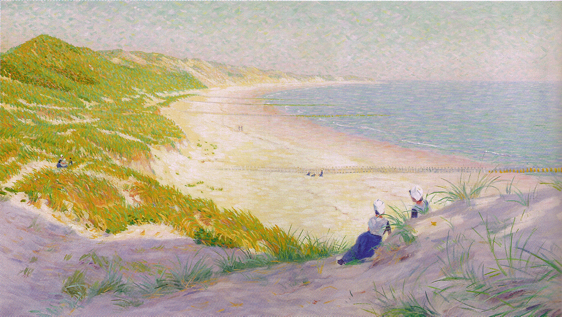After the success of the Oosterbeek colony, and with the industrialisation of cities like Rotterdam and Amsterdam, the artists drawn to landscape painting were looking for a new place. Jozes Israëls discovered the village of Laren with his son Isaac, who he spent time with outdoor painting. Laren was a beauty of a town, surrounded by heather, forests and agricultural activity, and soon other artists came to visit. Full of excitement, these young artists were inspired by the diversity of landscape and the ideal connection to both the Hague School and Oosterbeek.
Later, Laren was rediscovered by painters who gave new life to the colony for the next 40 years. One group followed the traditions of the Hague School, the rest of the group painting in the newer style of Impressionism. The colony became known for its Dutch Impressionism, and presented as part of this international movement. The ideas buzzing around the Laren area found their way into the Modernist movement. In 1901, American painter and art collector William Henry Singer came to Laren and built a villa called De Wilde Zwanen, which was later converted into the Singer Museum. Up to today, you can still visit it.
Photo credits:
(Toulouse) Marine – Théodule Ribot – Laren, Singer Museum, The Netherlands (Wikimedia Commons)
Gijs Bosch Reitz – Leaving St John’s Church in Laren (Wikimedia Commons)
New Singer Museum Laren (Wikimedia Commons)
Town hall (national monument): M.M.Minderhoud or Wikipedia/Michiel1972 – Own work











